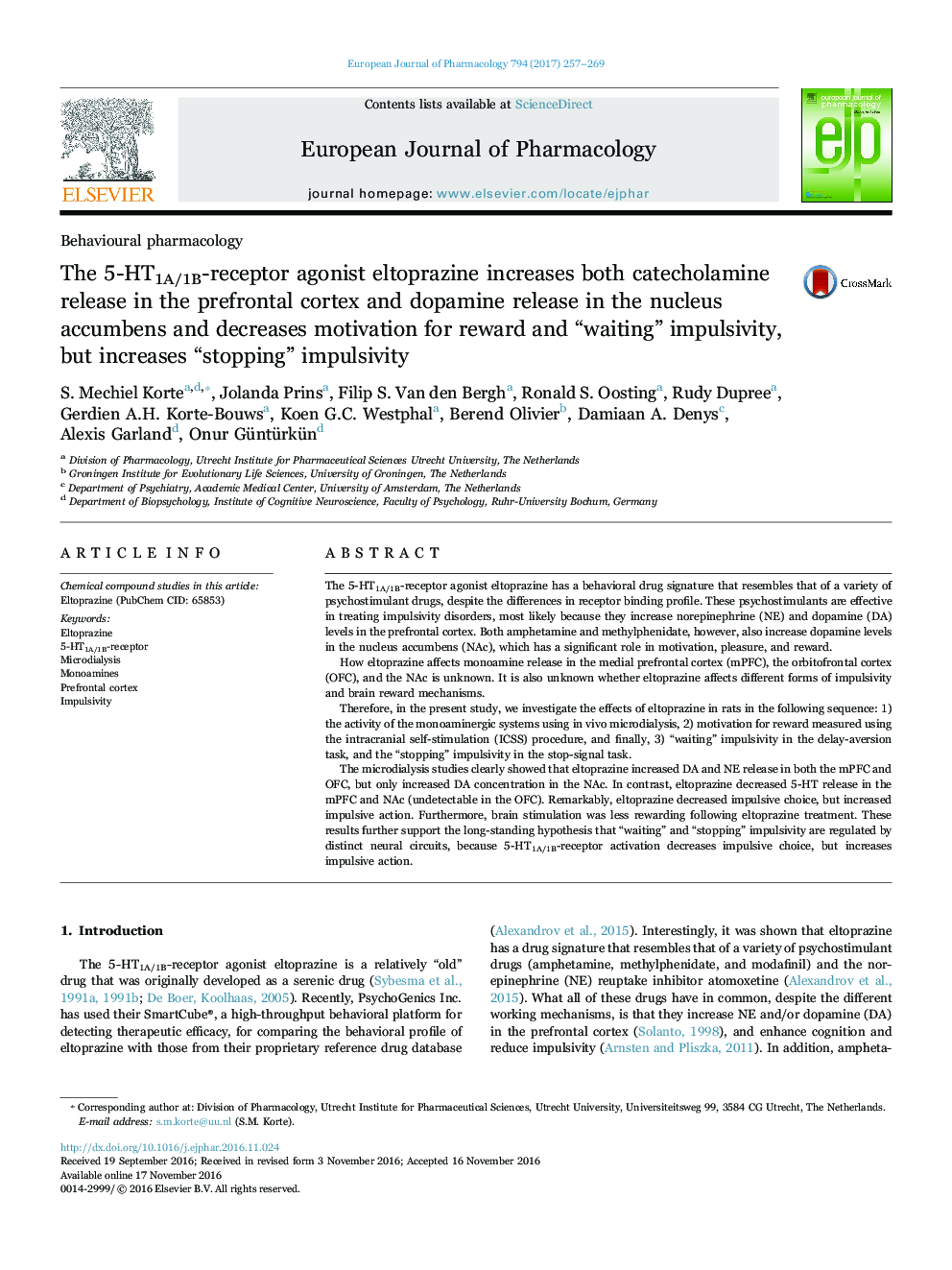| کد مقاله | کد نشریه | سال انتشار | مقاله انگلیسی | نسخه تمام متن |
|---|---|---|---|---|
| 5554903 | 1558886 | 2017 | 13 صفحه PDF | دانلود رایگان |

The 5-HT1A/1B-receptor agonist eltoprazine has a behavioral drug signature that resembles that of a variety of psychostimulant drugs, despite the differences in receptor binding profile. These psychostimulants are effective in treating impulsivity disorders, most likely because they increase norepinephrine (NE) and dopamine (DA) levels in the prefrontal cortex. Both amphetamine and methylphenidate, however, also increase dopamine levels in the nucleus accumbens (NAc), which has a significant role in motivation, pleasure, and reward.How eltoprazine affects monoamine release in the medial prefrontal cortex (mPFC), the orbitofrontal cortex (OFC), and the NAc is unknown. It is also unknown whether eltoprazine affects different forms of impulsivity and brain reward mechanisms.Therefore, in the present study, we investigate the effects of eltoprazine in rats in the following sequence: 1) the activity of the monoaminergic systems using in vivo microdialysis, 2) motivation for reward measured using the intracranial self-stimulation (ICSS) procedure, and finally, 3) “waiting” impulsivity in the delay-aversion task, and the “stopping” impulsivity in the stop-signal task.The microdialysis studies clearly showed that eltoprazine increased DA and NE release in both the mPFC and OFC, but only increased DA concentration in the NAc. In contrast, eltoprazine decreased 5-HT release in the mPFC and NAc (undetectable in the OFC). Remarkably, eltoprazine decreased impulsive choice, but increased impulsive action. Furthermore, brain stimulation was less rewarding following eltoprazine treatment. These results further support the long-standing hypothesis that “waiting” and “stopping” impulsivity are regulated by distinct neural circuits, because 5-HT1A/1B-receptor activation decreases impulsive choice, but increases impulsive action.
Journal: European Journal of Pharmacology - Volume 794, 5 January 2017, Pages 257-269